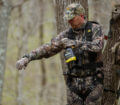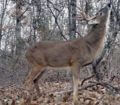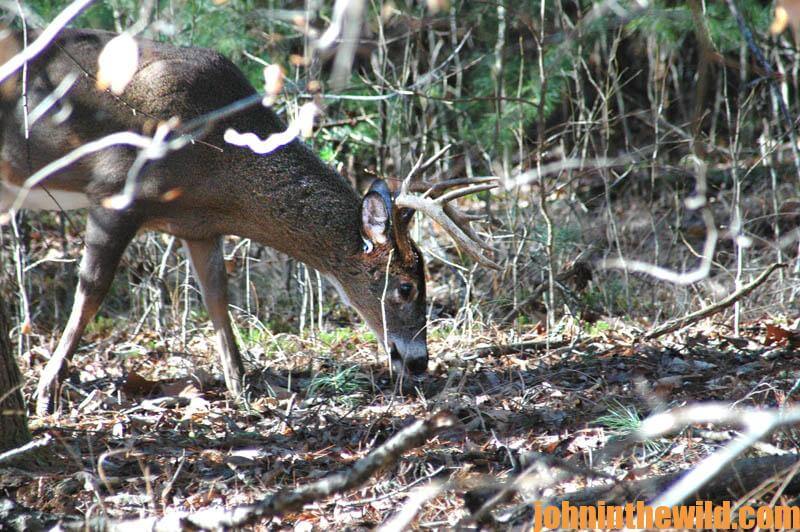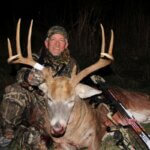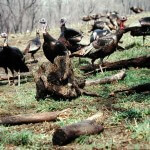Editor’s Note: Dr. Robert Sheppard of Tuscaloosa, Alabama, is the supreme student of deer and their habits. He approaches deer hunting scientifically and enjoys nothing more than gathering information about deer. This week he’s sharing with us how winds and thermals affect deer and how that impacts your deer hunting.
 Wind, which is one form of air movement, is generally directional to points on the compass. But thermals are air movements upward or downward. The importance of thermals are well known to most sportsmen who hunt hilly regions. If you understand this type of air movement, you can be more successful. When hunting on the side of a mountain, 2 miles from the bottom to the top, most hunters realize they want to be hunting the top side of the mountain in the morning when the thermals are causing the air at the bottom of the mountain to rise to the top. Then they prefer to hunt at the bottom of the mountain in the afternoon when the thermals will cause the air at the top of the mountain to drift to the bottom. The general upward drift of air in the morning will take the hunter’s scent up and away from the deer. Remember not to leave your odor on the ground or bushes in the morning. Consider wearing thigh-high rubber boots. The general downward movement of the air in the afternoon will keep the hunter’s scent close to the ground and away from the deer in the late evening. The flatland hunter has to deal with thermals just as the hill hunter does, but the thermals aren’t as obvious. The air still usually rises in the morning and falls in the evening.
Wind, which is one form of air movement, is generally directional to points on the compass. But thermals are air movements upward or downward. The importance of thermals are well known to most sportsmen who hunt hilly regions. If you understand this type of air movement, you can be more successful. When hunting on the side of a mountain, 2 miles from the bottom to the top, most hunters realize they want to be hunting the top side of the mountain in the morning when the thermals are causing the air at the bottom of the mountain to rise to the top. Then they prefer to hunt at the bottom of the mountain in the afternoon when the thermals will cause the air at the top of the mountain to drift to the bottom. The general upward drift of air in the morning will take the hunter’s scent up and away from the deer. Remember not to leave your odor on the ground or bushes in the morning. Consider wearing thigh-high rubber boots. The general downward movement of the air in the afternoon will keep the hunter’s scent close to the ground and away from the deer in the late evening. The flatland hunter has to deal with thermals just as the hill hunter does, but the thermals aren’t as obvious. The air still usually rises in the morning and falls in the evening.
A bad situation to try and take a deer because of thermals occurring is when a hunter goes to his stand early in the afternoon with little or no wind. Under these conditions, the hunter’s scent will be forced straight down the tree and spread out in all directions. For deer to come within shooting range and not smell a hunter under these conditions is almost impossible. Another condition that is almost death for a hunter is to be in a tree stand late in the afternoon during a rain with no wind when the fog begins to be  pushed close to the ground. This weather condition will make your scent hug close to the ground. The same situation prevails in any type of rainy weather that lasts all day with no wind. During those times, the best thing to do is either scout, try and stalk a deer or go home. One of my most-productive tactics for hunting during no-win situations with the wind and the thermals is to not go to my stand until 30 minutes before dark to spend as little time as possible in that stand. The longer I sit in the stand, the more time I give my scent to spread all over the area.
pushed close to the ground. This weather condition will make your scent hug close to the ground. The same situation prevails in any type of rainy weather that lasts all day with no wind. During those times, the best thing to do is either scout, try and stalk a deer or go home. One of my most-productive tactics for hunting during no-win situations with the wind and the thermals is to not go to my stand until 30 minutes before dark to spend as little time as possible in that stand. The longer I sit in the stand, the more time I give my scent to spread all over the area.
A hunter also can use thermals to his advantage, if the wind’s slight and only moving about 5 mph. If you’re hunting in the morning, you often can hunt from a stand with the wind at your back. With a slow wind and a rising thermal, your scent will be carried upwards above the deer. Then you can hunt out of a stand – even if the wind’s blowing in the wrong direction.
To know what’s happening with thermals when you’re in the tree stand, tie a small piece of string onto the end of your broadhead or gun barrel. In the morning, thermals will cause the thread to lift up and settle back down. In the late evening, the thread will hang straight down if there is no wind. Although I’m a doctor in Tuscaloosa, Ala., and totally against smoking, to test this theory, light a cigarette in late afternoon with no wind, and watch the smoke settle to the ground. In early morning, you can see cigarette smoke rise, even with no wind. The way the cigarette smoke moves is the same way your scent travels.

 To learn more about hunting deer, go to John E. Phillips’s book, “How to Hunt Deer Up Close with Bows, Muzzleloaders and Crossbows,” available in Kindle, print and Audible versions at https://www.amazon.com/dp/B00A2A6ZG6#. To receive your free book on “How to Make Venison Jerky,” go to https://www.emailmeform.com/builder/form/Ece3UZVcOo52cKPJcL.
To learn more about hunting deer, go to John E. Phillips’s book, “How to Hunt Deer Up Close with Bows, Muzzleloaders and Crossbows,” available in Kindle, print and Audible versions at https://www.amazon.com/dp/B00A2A6ZG6#. To receive your free book on “How to Make Venison Jerky,” go to https://www.emailmeform.com/builder/form/Ece3UZVcOo52cKPJcL.

